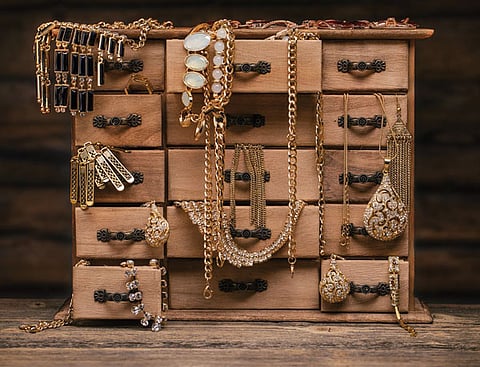

The world is living it up
Report after report says the same thing – that the year 2021 has been a year of phenomenal growth for the luxury market. According to Euromonitor International, India’s luxury goods market plunged 33% to $5 billion in 2020, but in 2021, it grew to $6 billion, and will see consistent rise over the coming years.
Bain & Company’s Fall 2021 Luxury Study says that the luxury market rebounded in 2021, and is set to return to a historic growth trajectory. Bain estimates that the global personal luxury goods sales will have reached €283 billion ($324 billion) by the end of 2021, marking a 1% increase over 2019 levels, and 29% over 2020 levels. Earlier, full recovery was not expected until well into 2022.
As per the report, “Over the past two decades, the Bain & Company Luxury Study has become a reference point for the industry, but it has never seen a year of surging performance to match 2021. With personal luxury goods sales likely to be up by almost a third, the 20th edition of the study is a landmark in more ways than one. The market for personal luxury goods — the ‘core of the core’ of luxury segments and the focus of this analysis—has come roaring back, experiencing a V-shaped recovery in 2021. After a sharp contraction in 2020, personal luxury goods sales are set to beat their pre- COVID record, with the market forecast to grow by 29% at current exchange rates to hit €283 billion, likely finishing the year up 1% from its 2019 record.” The Knight Frank Wealth Report 2021 says that the number of ultra-high net worth individuals in India stood at 6,884, but it is projected to rise 63% to 11,198 by 2025; the number of dollar billionaires in India stood at 113, it is projected to go up to 162 by 2025, and that 20% of global luxury sales will move online by 2025. This is the high-end luxury item consuming segment, and with the segment itself expanding, sales of luxury items are bound to grow.
Adds Cristel Tan, International Jewellery Specialist, South East Asia, Phillips, “At Phillips Jewels, the number of clients registering in jewels sales has doubled since 2019. In addition, we have increased our auction offerings from six auctions in 2019 to 12 auctions in 2021 (two out of the 12 auctions were cross category sales, which include watches, jewellery and art). This demonstrates the robustness of the market and reflects the appetite for well-curated jewels. For Phillips, since 2019, both the % of clients bidding online has tripled and the % of lots sold to online bidders has tripled. Furthermore, the total value of the lots sold to online bidders has increased 600% over the past two years.
“The third reason is that there has been a lot of scarcity of goods, which has been created due to the pandemic, and this has created a lot of demand. Product availability is less, aspirations are high, and so, markets are growing.
“The final and the most important reason is that most of the governments are very conscious of the growth of the economy and well-being of their citizens during a pandemic. So, most of the global economies are booming. This growth has flushed people with money, and therefore, the spending has increased. And of course, a lot of money was made through the stock exchange. The younger generation, that is youth between the age group of 25-40, has really made money with this whole new start-up and digital entrepreneurship, which is also creating spend, and thus growth. In the luxury space, people don’t buy just for an occasion, they buy because they like something, and they have the money to fulfil their aspirations.
Agrees Tan, “Luxury is now seen as a lifestyle, with the evolving nature of the global luxury market. The concept of an elevated buying experience, supported by a strong digital presence, has propelled this growth. The inability to travel over the last couple of years, coupled with new wealth creation, has spurred on more spending towards luxury. Enhanced digital platforms for buyers to explore social media and creative content, and interactive participation in online and live auctions – all this has contributed to strong sales in the luxury segment, despite the limited travel activity. Pandemic conditions have motivated more buying of tangible assets for clients and their loved ones. Now that restrictions are lifting, there is a rejuvenated atmosphere, with buyers excited to be out and about, purchasing and wearing high-end jewellery again.”
Projecting forward, Bain predicts personal luxury goods will continue their upward trajectory through 2025, advancing between 5% to 9% CAGR to reach €360 to €380 billion ($412- $435 billion). Philipps also believes that luxury markets will continue to enhance their digital presence and create new experiences to engage new and existing clients
And, in all likelihood, the growth will continue through 2025.
Follow DiamondWorld on Instagram: @diamondworldnet
Follow DiamondWorld on Twitter: @diamondworldnet
Follow DiamondWorld on Facebook: @diamondworldnet
